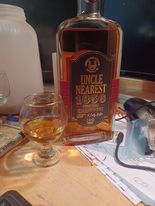Whiskey, the amber-hued spirit that has captivated palates and warmed hearts for centuries, has also found its way into literature, where its nuanced character and cultural significance have been celebrated, scrutinized, and symbolized in various forms.
From the melancholic musings of poets to the complex plots of novels, whiskey has left its mark on literature, becoming more than just a drink – a symbol of both joy and despair, a catalyst for camaraderie and introspection, and a metaphor for the human experience itself.
The relationship between whiskey and literature dates back centuries. As early as the 18th century, writers began to incorporate references to whiskey in their works, often reflecting the time’s societal attitudes and cultural practices. One of the earliest examples can be found in the works of Robert Burns, the national poet of Scotland, who famously celebrated “Scotch drink” in his poems. Burns’ verses not only exalted the sensory pleasures of whiskey but also delved into its symbolic resonance, aligning it with the values of camaraderie and shared experience.
O thou, my muse! guid auld Scotch drink!
Whether thro’ wimplin worms thou jink,
Or, richly brown, ream owre the brink,
In glorious faem,
Inspire me, till I lisp an’ wink,
To sing thy name!
~ Robert Burns
Whiskey has often been used as a symbol to explore the complexities of individual and cultural identity. In many stories, characters’ preferences for certain types of whiskey can reveal more profound aspects of their personalities, desires, and social backgrounds. Whether it’s the refined choices of a wealthy aristocrat or the rough spirits favored by laborers, these selections can shed light on the societal hierarchies and class dynamics of the time.
James Joyce’s “Ulysses” is a prime example of how whiskey can be woven into a narrative to reflect broader themes. The protagonist, Leopold Bloom, finds solace and connection in his pub visits and his enjoyment of a glass of whiskey. His experiences become a mirror for the complex weave of Dublin’s cultural fabric, revealing the city’s economic struggles, political tensions, and societal divisions. Through the lens of whiskey, Joyce captures the essence of Dublin and its people, showcasing the drink’s role as a unifying force amid diversity.
Whiskey’s intoxicating allure often catalyzes introspection and self-discovery in literature. In moments of solitude or shared contemplation, characters turn to whiskey to confront their fears, desires, and inner conflicts. The drink becomes a conduit for characters to open up, express vulnerability, and explore their
emotions.
Tennessee Williams’ play “The Glass Menagerie” masterfully employs whiskey as a vehicle for introspection. The character Tom, seeking respite from his responsibilities, often turns to alcohol as a means of escape. The subtle interplay between his indulgence in whiskey and his yearning for a better life highlights the complexities of his character, illustrating how the drink can provide temporary relief and accentuate his internal struggles.
First it turned to wine and then it turned to beer and then it turned to whisky.
~ The Glass Menagerie
Whiskey has long been linked to loss, longing, and nostalgia themes in literature. Raising a glass in memory of a departed loved one or in honor of times gone by has a poignant resonance. In these moments, the amber liquid becomes a tangible connection to the past, a vessel that holds the bittersweet essence of cherished memories.
F. Scott Fitzgerald’s novel “The Great Gatsby” features scenes with whiskey as a backdrop to the characters’ desires and disillusionments. The lavish parties in the story’s setting, the decadent 1920s, are marked by flowing alcohol and an air of recklessness. Yet, beneath the veneer of opulence, the characters grapple with unfulfilled aspirations and a sense of emptiness. The symbolism of whiskey underscores the transient nature of their pursuits and the ephemeral nature of their happiness.

In the vast tapestry of literature, whiskey emerges as a thread that weaves together stories of celebration and sorrow, camaraderie and solitude, aspiration and disillusionment. From its historical roots to its contemporary interpretations, whiskey’s presence in literature is a testament to its enduring allure and the myriad ways it mirrors the human experience.
Through the words of poets and the narratives of novelists, whiskey takes on multiple roles – a symbol of identity, a catalyst for introspection, and an expression of loss and longing. It is a testament to the interplay between culture and creativity, revealing how a simple drink can become a powerful metaphor that resonates across time and space.
As readers delve into literary works that feature whiskey, they engage with stories and immerse themselves in the essence of a drink that transcends its physical form. Whiskey becomes a conduit through which authors explore the depths of human emotion, society’s intricacies, and the dance between past, present, and future. Just as a sip of whiskey can evoke myriad flavors and sensations, so too can its presence in literature evoke a rich tapestry of emotions and ideas, inviting readers to raise their own glass to the spirited journey through the written word.









